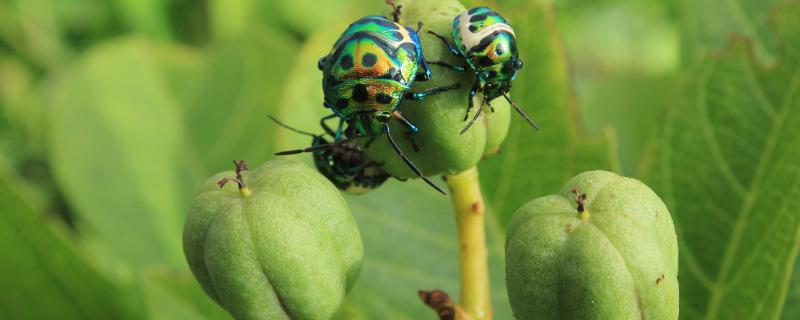Jumping spider Anarrhotus sp. found to build an orb-web as a nocturnal retreat, unusual for a spider from the Salticidae family.
Ecology
The changing climate is taking a toll everywhere on the planet, and the fragile, biodiversity-rich ecosystems of the Himalayas are no exception. In a recent study, researchers from the CSIR-National Environmental Engineering Research Institute, Nagpur, and Society for Conserving Planet and Life, Uttarakhand, have reported how changes in the Himalayan climate could affect the habitat of seabuckthorn, a medicinal plant which grows in the region.
Researchers from the Wildlife Institute of India have reported the first photographic evidence for the majestic tiger in the Eastern Himalayas at altitudes as high as 3,630 m.
Water is essential in biochemical processes needed for the survival of living organisms. Humans can survive without water for about 2-7 days. However, there exists an animal so resilient that it can withstand water scarcity for decades! Tardigrades, also called water bears, are small aquatic animals that are about 1.2 mm long with a head and four pairs of clawed legs, looking like cute little gummy bears.
Standing a metre tall and weighing up to a whopping 18 kilograms, the Great Indian bustards (GIB) are one of the heaviest flying birds on Earth. Yet, they are unable to ‘throw their weight around’ in this world dominated by us. Their numbers have drastically declined by nearly 90% in the last 50 years, and the future of these charismatic birds look very bleak. They are now in a tight race against time for their survival, and if things don’t change fast, they could be the first species to go extinct in independent India.
Researchers at the National Centre for Biological Sciences (NCBS), Bengaluru, University of Leeds, UK, and Manipal Academy of Higher Education, Manipal, traced some of the misinformed decisions that were made in the past about trying to grow forests in the shola-grassland landscapes of the Nilgiris.
Researchers at the Jawaharlal Nehru Tropical Botanic Garden and Research Institute, Thiruvananthapuram, explore how insectivorous plants attract insects.
Researchers from the Mahatma Gandhi University, Kottayam, report that the diversity of earthworms enriches the carbon content of the soil.
Researchers from Switzerland, Germany, Austria and India have calculated the distribution of ice thickness or the volume of ice in the glaciers present across the globe.
Researchers from M.E.S. Abasaheb Garware College, Pune, explore how density of plants affects the presence and abundance of herbivores.










